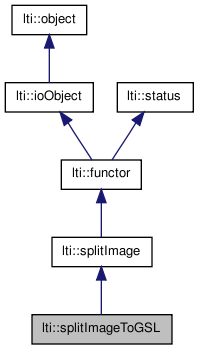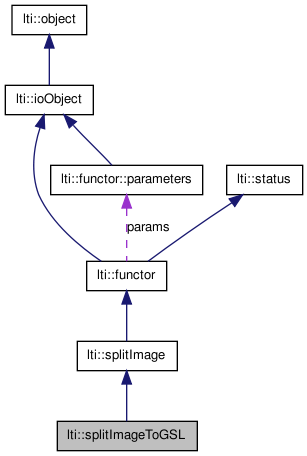

|
latest version v1.9 - last update 10 Apr 2010 |
|
Split image in its l1, l2 and l3 components, as described in T. More...
#include <ltiSplitImageToGSL.h>


Public Member Functions | |
| virtual const char * | getTypeName () const |
| virtual functor * | clone () const |
| virtual bool | apply (const image &img, channel &l1, channel &l2, channel &l3) const |
| virtual bool | apply (const image &img, channel8 &l1, channel8 &l2, channel8 &l3) const |
| virtual bool | apply (const rgbPixel &pixel, float &l1, float &l2, float &l3) const |
| virtual bool | apply (const rgbPixel &pixel, ubyte &l1, ubyte &l2, ubyte &l3) const |
| virtual bool | getFirst (const image &img, channel &l1) const |
| virtual bool | getFirst (const image &img, channel8 &l1) const |
| virtual bool | getSecond (const image &img, channel &l2) const |
| virtual bool | getSecond (const image &img, channel8 &l2) const |
| virtual bool | getThird (const image &img, channel &l3) const |
| virtual bool | getThird (const image &img, channel8 &l3) const |
Split image in its l1, l2 and l3 components, as described in T.
Gevers and A. Smeulders "Color-based object recognition" Pattern Recognition, Vol. 32, 1999, pp. 453-464.
This color space is appropriate when trying to detect only material changes, but ignoring shadow, shape or highlight edges.
The channels are defined as follows:
![\[ \begin{aligned} l_1 &= \frac{|R-G|}{|R-G| + |R-B| + |G-B|}\\ l_2 &= \frac{|R-B|}{|R-G| + |R-B| + |G-B|}\\ l_3 &= \frac{|G-B|}{|R-G| + |R-B| + |G-B|} \end{aligned} \]](form_111.png)
There is no merge functor for this split method.
| virtual bool lti::splitImageToGSL::apply | ( | const rgbPixel & | pixel, | |
| ubyte & | l1, | |||
| ubyte & | l2, | |||
| ubyte & | l3 | |||
| ) | const [virtual] |
split the pixel in red green and blue values.
The values of each pixel will be between 0 and 255
Implements lti::splitImage.
| virtual bool lti::splitImageToGSL::apply | ( | const rgbPixel & | pixel, | |
| float & | l1, | |||
| float & | l2, | |||
| float & | l3 | |||
| ) | const [virtual] |
split the pixel in red green and blue values.
The values of each pixel will be between 0.0f and 1.0f
Implements lti::splitImage.
| virtual functor* lti::splitImageToGSL::clone | ( | ) | const [virtual] |
returns a pointer to a clone of the functor.
Implements lti::functor.
| virtual const char* lti::splitImageToGSL::getTypeName | ( | ) | const [virtual] |
returns the name of this type
Reimplemented from lti::splitImage.